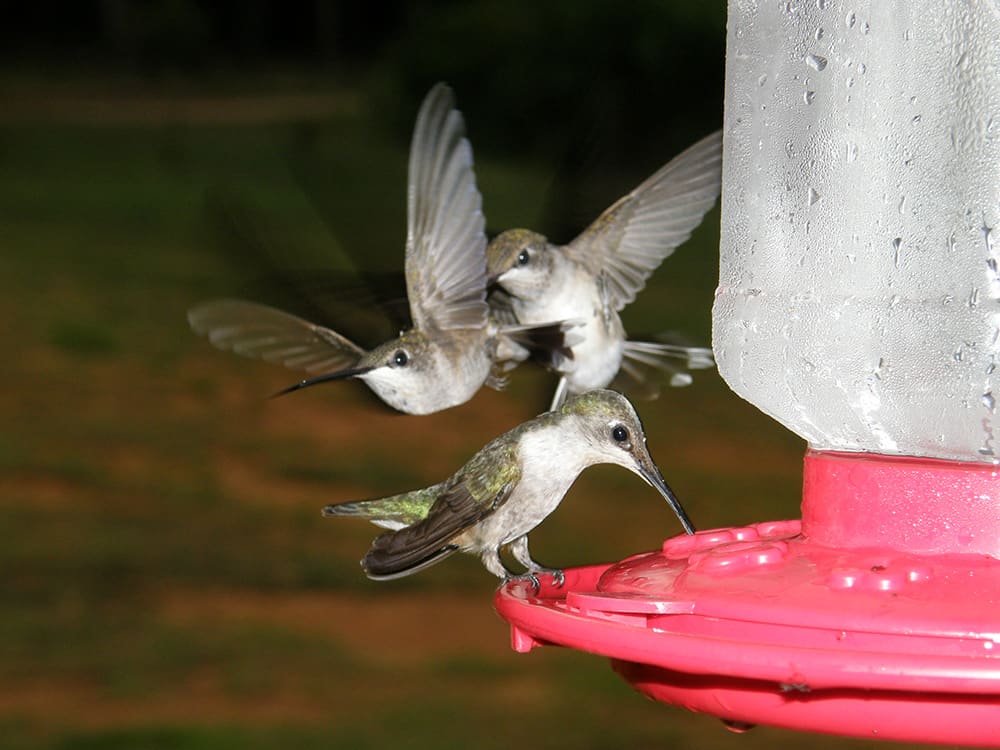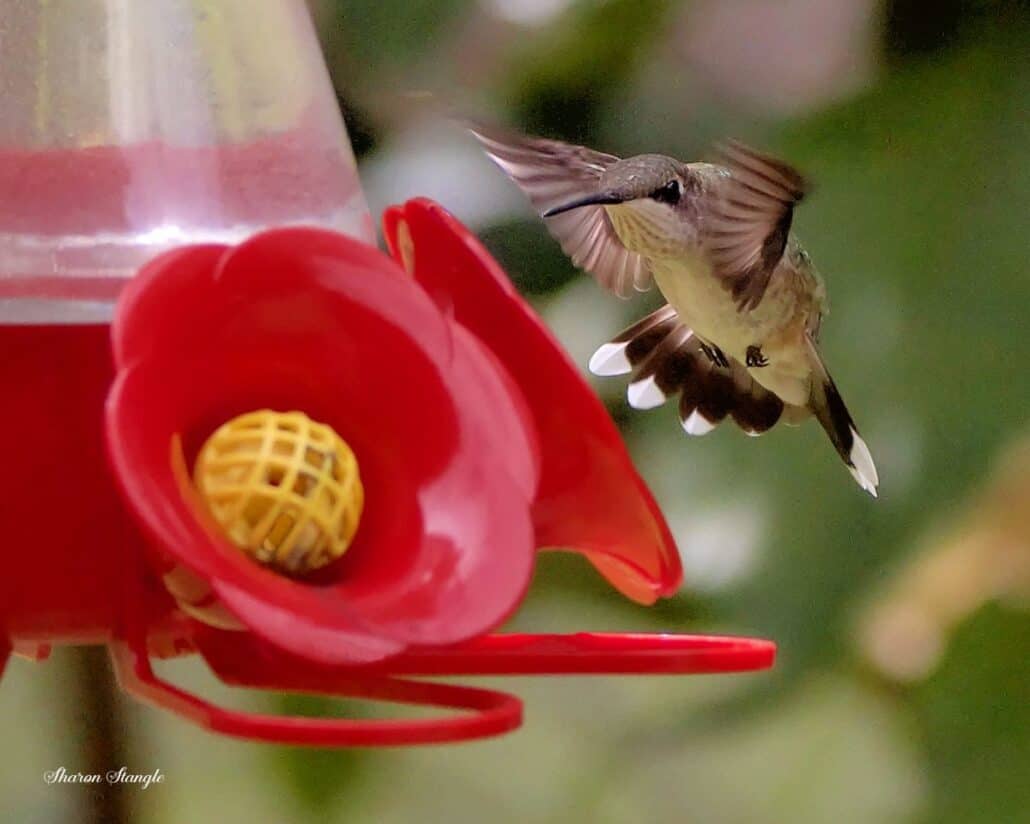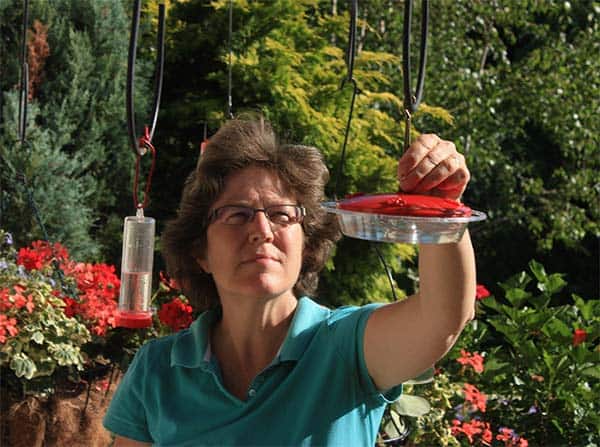Migration is about food and survival. Nearly all of our North American hummingbird species migrate seasonally, and for many this means the traditional migration patterns: north in the spring, south in the fall. But a closer look reveals a more complex reality. The Anna’s hummingbird is resident year-round in much of its range along the Pacific Coast, but after breeding, this species moves up to higher elevation mountain meadows to take advantage of bountiful feeding on blooming flowers. In fall, when the mountain flowers are slowing down, the Anna’s heads back to the coast.
The Costa’s hummingbird breeds in the desert washes of Arizona from January to May, then heads west to the California coast and Mexico’s Baja peninsula. Buff-bellied hummingbirds nest in south Texas and while most go south to Mexico in winter, some move up along the Texas coast and around the gulf to spend the winter as far east as Florida.
Our other common hummer species depart from their breeding ranges in mid-to-late summer, and head to greener pastures for the winter. For most of them this involves a southbound migration to the tropics of Mexico and Central America. Many of these species’ migrations describe a circular or oval route. Among our western hummingbird species the rufous, Allen’s, broad-tailed, and Calliope move north along the Pacific coastal lowlands, and move south through the Rocky Mountains.
How Do They Know When to Go?
We do know that hummingbirds migrate when an inner urge prompts them to do so. It is thought (by pointy-headed ornithologists who—thank heavens—are willing to study such things) that this inner urge is driven by changes in the intensity of daylight. As the summer begins to wane, subtle changes in the intensity of the daylight occur and these are perceived, instinctively, by hummingbirds (and other migrant birds, too). This in turn triggers an increase in the hummers’ appetite, which helps them put on fat reserves for the arduous migration ahead.
So it’s not the weather turning colder, nor is it the leaves turning brown, or the start of the football season that makes hummingbirds want to migrate. It’s instinct resulting from millions of years of evolution. No amount of sweet, fresh nectar in your feeders or gorgeous blooming flowers in your garden will keep a migrant hummingbird from leaving.




